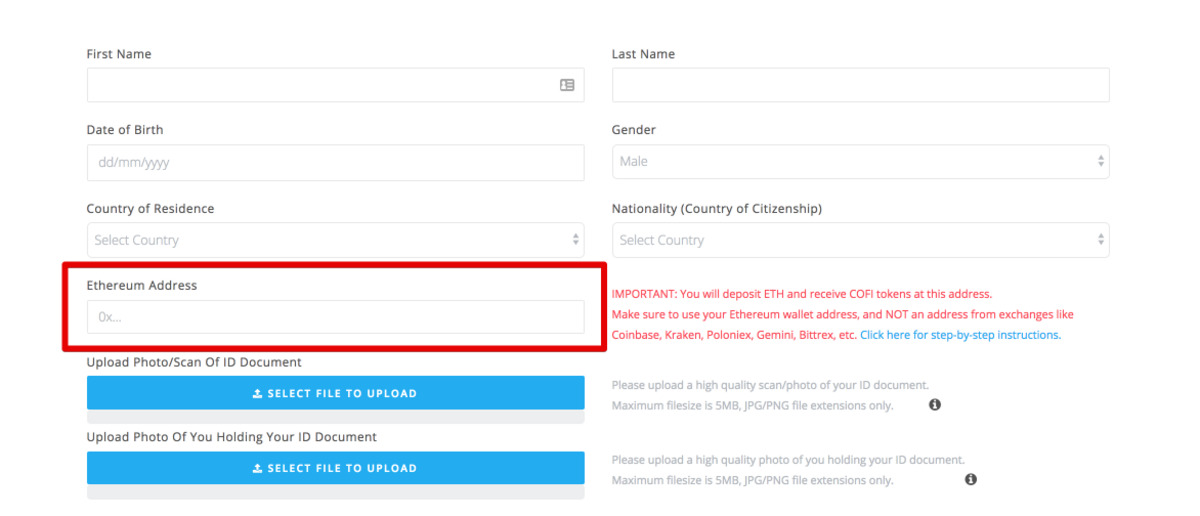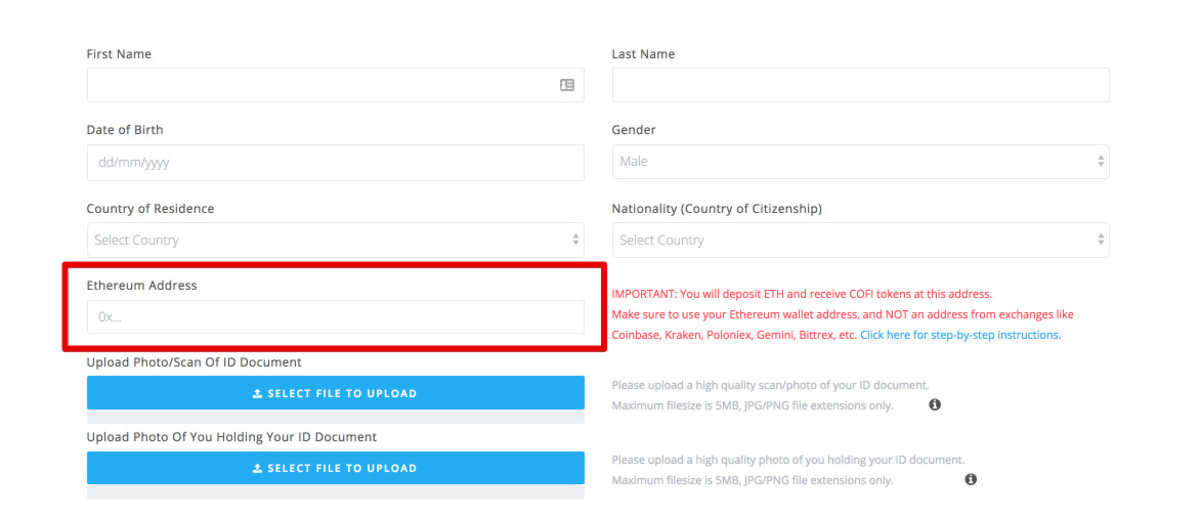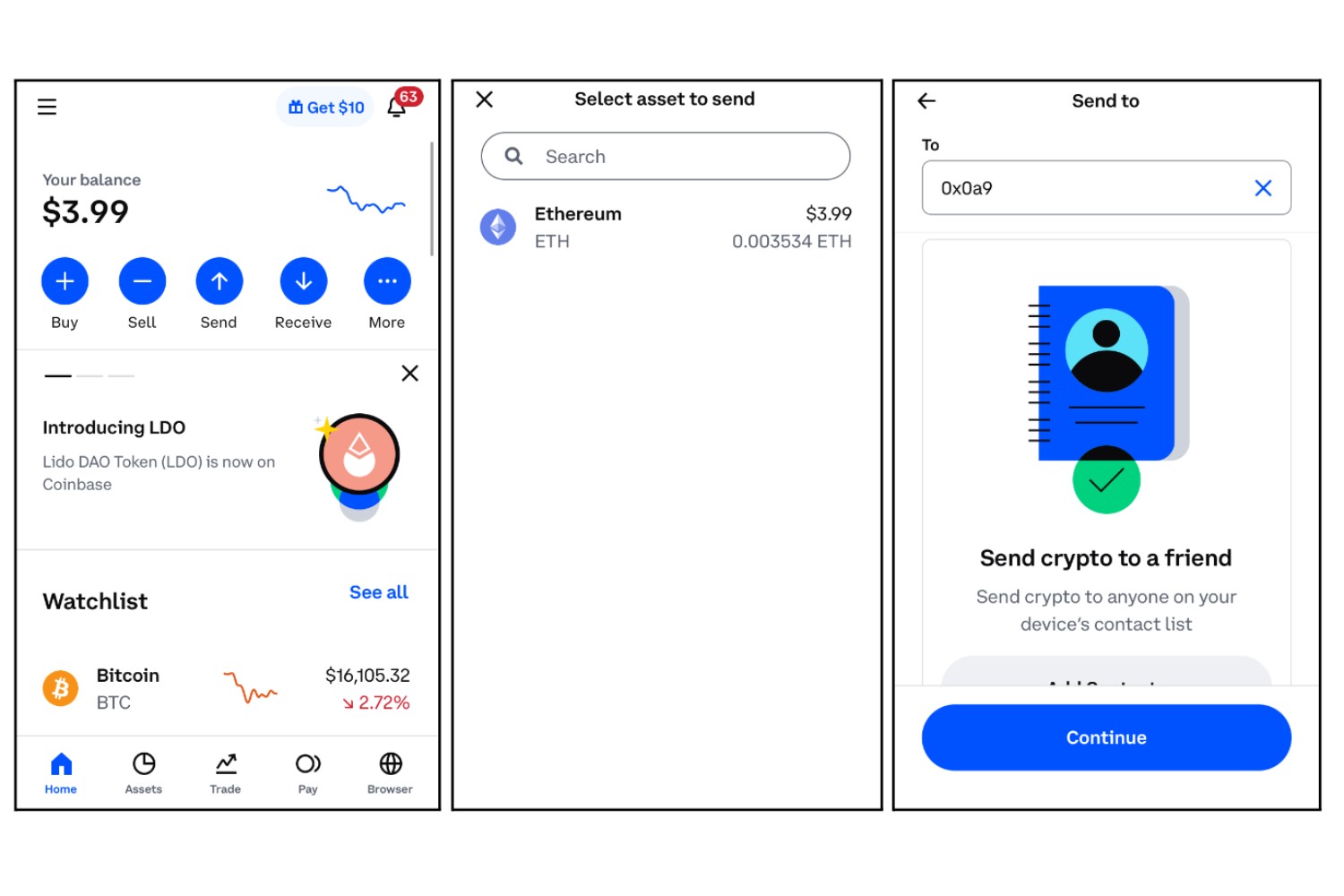Introduction
Welcome to the world of blockchain technology! In recent years, blockchain has revolutionized various industries, providing a transparent and secure way to store and transfer digital assets. While public blockchains like Bitcoin and Ethereum have gained widespread popularity, private blockchain networks have also emerged as a powerful solution for organizations seeking to harness the benefits of blockchain technology while maintaining a level of privacy and control.
But what exactly is a private blockchain network? In simple terms, it is a blockchain network that is accessible only to a select group of users or organizations. Unlike public blockchains, where anyone can participate and verify transactions, a private blockchain restricts access to a specific set of participants, ensuring confidentiality and data privacy.
Now, you may be wondering, why should you consider using Ethereum for creating a private blockchain network? Well, Ethereum is not just a cryptocurrency; it is a robust blockchain platform that allows developers to build decentralized applications (DApps) and smart contracts. Its open-source nature and flexibility make it an ideal choice for creating private blockchain networks.
In this article, we will guide you through the process of creating a private blockchain network using the Ethereum platform. We will cover the necessary steps, from setting up the Ethereum development environment to connecting nodes to the network. By the end, you will have a solid understanding of how to create and manage your own private blockchain network.
Before we dive into the technical aspects, it’s essential to have a basic understanding of blockchain technology and how it works. At its core, a blockchain is a distributed ledger that records transactions across multiple computers, ensuring immutability and transparency. Each transaction is bundled into a block and linked to the previous blocks, creating a chain of information. This decentralized nature eliminates the need for intermediaries and reduces the risk of fraud.
Now that we have a brief overview of private blockchain networks and Ethereum, let’s move on to setting up the development environment and start creating our own private blockchain network!
What is a private blockchain network?
In the world of blockchain technology, a private blockchain network refers to a blockchain network that is restricted and accessible only to a specific group of participants. Unlike public blockchains such as Bitcoin and Ethereum, where anyone can join the network, a private blockchain imposes access control, allowing only trusted entities to participate.
Private blockchain networks offer several advantages over public blockchains, making them an appealing choice for businesses and organizations that require a higher level of privacy and control over their blockchain operations. Here are some key features and benefits of private blockchain networks:
- Efficiency and scalability: In a public blockchain network, where anyone can participate and validate transactions, scalability can become a challenge. Private blockchain networks, on the other hand, have fewer participants, enabling faster transaction confirmations and improved scalability.
- Confidentiality: While public blockchains are designed to be transparent and open to anyone, private blockchain networks allow for confidential transactions and data sharing. Participants within the network can maintain privacy and control over sensitive information.
- Consensus mechanisms: Public blockchains typically use consensus mechanisms like Proof of Work (PoW) or Proof of Stake (PoS). Private blockchains have the flexibility to implement different consensus mechanisms tailored to the specific needs of the network participants.
- Cost-effectiveness: Public blockchain networks often come with transaction fees and token costs. In a private blockchain network, these costs can be significantly reduced or eliminated altogether, resulting in cost savings for the participants.
- Higher throughput: Private blockchains can achieve higher transaction speeds and throughput compared to public blockchains. With fewer participants and optimized consensus mechanisms, private blockchain networks can process a larger number of transactions per second.
- Customization and control: Private blockchain networks offer greater flexibility and control over the rules, protocols, and governance of the network. Participants can customize the network to suit their specific requirements and business processes.
Private blockchain networks find applications in various industries, such as banking, supply chain management, healthcare, and government sectors. They enable organizations to leverage the benefits of blockchain technology while maintaining compliance, security, and privacy standards.
It’s important to note that private blockchain networks may not be suitable for all use cases. If the goal is to achieve decentralization and trust through a network that includes a wide range of participants, a public blockchain may be more appropriate. However, for businesses that prioritize confidentiality, scalability, and control, a private blockchain network can provide the necessary solutions.
Now that we have an understanding of what private blockchain networks are and their advantages, let’s explore why Ethereum is a popular choice for building private blockchain networks in the next section.
Why use Ethereum for a private blockchain network?
When it comes to creating a private blockchain network, Ethereum stands out as a leading platform choice for several reasons. Ethereum is not just a cryptocurrency; it is a powerful blockchain platform that enables developers to build decentralized applications (DApps) and smart contracts. Here are some compelling reasons why Ethereum is widely used for private blockchain networks:
- Flexibility and programmability: Ethereum provides a highly flexible and programmable platform for building decentralized applications and smart contracts. This allows developers to tailor their private blockchain network to meet specific business requirements and workflows.
- Smart contract functionality: Ethereum’s built-in support for smart contracts is a significant advantage for private blockchain networks. Smart contracts are self-executing contracts with predefined rules and conditions. They enable automation, decentralization, and enforceability of agreements within the network.
- Open-source nature: Ethereum’s codebase is open-source, which means it can be audited, reviewed, and improved by the community. This transparency fosters trust and ensures the security and reliability of the private blockchain network.
- Large developer community: Ethereum has a vast and active developer community, which translates into extensive resources, documentation, and support for building and deploying applications on the platform. This ecosystem makes it easier for developers to get started and find solutions to any challenges they may encounter.
- Interoperability and standards: Ethereum follows common blockchain standards, such as ERC-20 (token standard) and ERC-721 (non-fungible token standard). These standards enable interoperability with other Ethereum-based applications, facilitating integration with existing systems and networks.
- Wide range of tools and frameworks: Ethereum offers a variety of tools and frameworks that simplify the development process for private blockchain networks. These include Ethereum clients like Geth and Parity, development frameworks like Truffle and Embark, and user-friendly interfaces like Remix.
- Established infrastructure: Ethereum has been in operation since 2015 and has a mature infrastructure that supports private blockchain networks. From test networks to developer tools, the Ethereum ecosystem provides a solid foundation for creating and managing private blockchain networks.
By leveraging Ethereum for a private blockchain network, businesses can unlock the benefits of blockchain technology while maintaining privacy, security, and control. From enabling secure and efficient transactions to automating complex business processes through smart contracts, Ethereum offers a comprehensive solution for building and deploying private blockchain networks.
However, it’s important to note that Ethereum is just one of many options available for creating private blockchain networks. The choice of platform depends on the specific requirements and objectives of the network. It’s essential to carefully evaluate the features, capabilities, and compatibility of different blockchain platforms before making a decision.
Now that we understand the advantages of using Ethereum for a private blockchain network, let’s move on to the technical steps involved in setting up the Ethereum development environment in the next section.
Setting up the Ethereum Development Environment
Before you can start creating a private blockchain network with Ethereum, it’s essential to set up the necessary development environment. The following steps will guide you through the process:
- Install and configure Geth client: Geth (Go Ethereum) is the most popular client implementation for Ethereum. First, download the appropriate version of Geth for your operating system and install it on your machine. Once installed, you’ll need to configure Geth by specifying the network ID, data directory, and other parameters.
- Create a genesis block: The genesis block is the initial block of a blockchain network. It defines the network’s parameters, including the network ID, chain ID, and initial account balances. Using the Geth client, you’ll generate a JSON file that contains the genesis block configuration. Customize the file according to your network requirements.
- Initialize the node: With the genesis block file in place, you can now initialize the first node of your private blockchain network. Run the Geth command to create a new chain and initialize the node with the genesis block configuration. This will create the necessary directories and files to store the blockchain data.
- Connect nodes to the network: To create a network of multiple nodes, you’ll need to run additional instances of the Geth client and connect them to the existing network. Each node will need its own data directory and unique network port. Use the appropriate commands to start additional Geth instances and connect them to the network.
Once you have completed these steps, you will have successfully set up the Ethereum development environment for creating your private blockchain network. You can now start exploring the various features and functionalities offered by Ethereum to build and deploy your own decentralized applications.
It’s important to note that the steps mentioned above provide a high-level overview of setting up the Ethereum development environment. Depending on your specific requirements and network configuration, you may need to delve deeper into the technical aspects and make additional customizations.
Before embarking on the development of your private blockchain network, it’s recommended to further explore the Ethereum documentation, online tutorials, and community resources. This will help you gain a more comprehensive understanding of the Ethereum platform and its capabilities.
In the next section, we will dive into the detailed steps of each of the aforementioned stages, from installing and configuring the Geth client to connecting nodes to the network. So, let’s get started with the first step: installing and configuring the Geth client!
Step 1: Install and Configure Geth Client
The first step in setting up your Ethereum development environment is to install and configure the Geth client. Geth, short for Go Ethereum, is the most widely used client implementation for Ethereum. It allows you to interact with the Ethereum network, create and manage accounts, deploy smart contracts, and more. Follow these steps to install and configure Geth:
- Download the Geth client: Visit the official Geth website or the GitHub repository to download the appropriate version of the client for your operating system. Geth is available for Windows, macOS, and Linux.
- Install Geth: Once the download is complete, follow the installation instructions to install Geth on your machine. The installation process may vary depending on your operating system. Ensure that you have administrative privileges if required.
- Configure network parameters: After installing Geth, you’ll need to configure the network parameters for your private blockchain. This includes specifying the network ID, data directory, port numbers, and other settings.
- Network ID: Choose a unique identifier for your private network. The network ID can be any positive integer and distinguishes your network from other Ethereum networks.
- Data directory: Decide where you want to store the blockchain data on your machine. Choose an appropriate directory and make a note of its location as you’ll need it later when initializing the nodes.
- Port numbers: Geth uses two types of ports: the listening port and the discovery port. The listening port allows Geth to accept incoming connections from other nodes. The discovery port is used for peer discovery. Choose available port numbers for both and ensure they are not blocked by firewalls or other software.
- Start Geth: With the configuration parameters in place, it’s time to start Geth. Open a command prompt or terminal window and navigate to the Geth installation directory. Use the appropriate command for your operating system to launch Geth.
- Verify the installation: To verify that Geth is installed correctly, you can run the command `geth version` in the command prompt or terminal window. It should display the installed version of Geth.
- Interact with Geth: Once Geth is up and running, you can interact with it using various commands. For example, you can create and manage Ethereum accounts, deploy smart contracts, query blockchain data, and more. Refer to the Geth documentation or online tutorials for a comprehensive list of available commands and their usage.
Congratulations! You have successfully completed the first step of installing and configuring the Geth client. With Geth set up, you are now ready to proceed to the next step of creating a genesis block, which is essential for initializing your private blockchain network.
In the following section, we will walk through the process of creating a genesis block to define the initial parameters of your private blockchain network.
Step 2: Create a Genesis Block
In the process of setting up your private blockchain network with Ethereum, the next step is to create a genesis block. The genesis block serves as the initial block of your blockchain network and defines crucial parameters, such as the network ID, chain ID, and initial configurations. Follow these steps to create a genesis block:
- Select a network configuration: Determine the network configuration that suits your needs. Consider factors like network consensus, block time, gas limit, and any additional customizations you wish to apply to your private blockchain.
- Create a Genesis Block JSON file: With the network configuration in mind, you will need to create a JSON file that specifies your genesis block. This JSON file will contain the network parameters, initial account balances, and any other specific configurations you want to set. You can use a basic template and modify it according to your requirements.
- Network parameters: Set the network ID and chain ID in the genesis block JSON file. The network ID is a unique identifier for your private network, while the chain ID specifies the version of the Ethereum protocol to use.
- Allocate initial account balances: Specify the initial balances of the accounts that will participate in your private blockchain network. Assign a sufficient amount of ether to each account to cover transaction fees and interactions with your smart contracts.
- Configure additional settings: Customize any other desired settings in the genesis block JSON file, such as gas limits, difficulty adjustments, and network-specific parameters, to align with your network requirements and objectives.
- Save the JSON file: Once you have configured the genesis block settings, save the file with a .json extension. Make note of the file’s location, as you will need it in the next steps.
Creating a custom genesis block allows you to define the initial parameters of your private blockchain network. It enables you to set unique configurations that match your specific use case and requirements.
Once you have created the genesis block JSON file, you are ready to move on to the next step: initializing the first node of your private blockchain network. This step sets the foundation for your network and establishes the initial state of the blockchain.
In the upcoming section, we will outline the process of initializing the node with the genesis block configuration to create your private blockchain network.
Step 3: Initialize the Node
After creating the genesis block for your private blockchain network, the next step is to initialize the first node. The initialization process sets up the node with the initial configuration and creates the necessary directories and files to store the blockchain data. Follow these steps to initialize the node:
- Open a terminal or command prompt: Launch a terminal or command prompt window on your machine.
- Navigate to the Geth installation directory: Use the ‘cd’ command to navigate to the directory where you installed the Geth client.
- Initialize the first node: Run the Geth command to initialize the first node of your private blockchain network. Include the flag ‘–datadir’ followed by the directory path where you want to store the blockchain data. This ensures that the node uses the specified data directory.
- Specify the genesis block file: Include the flag ‘–genesis’ followed by the path to your genesis block JSON file. This file contains the network parameters and initial configurations.
- Start the initialization process: Execute the command to start the initialization process. Geth will create the necessary directories and files, import the genesis block, and set up the node with the provided configuration.
- Note the node’s enode address: During the initialization process, Geth will display the node’s enode address. The enode address uniquely identifies the node within the network and is required for connecting additional nodes to the network.
- Wait for synchronization: After the initialization process is complete, the node will start synchronizing with the blockchain network. This process may take some time, depending on the network size and your machine’s resources. Wait for the synchronization to finish before proceeding.
Once the first node is initialized and synchronized with the network, you have a solid foundation for your private blockchain network. The node will be ready to accept and validate transactions, execute smart contracts, and participate in the consensus process.
With the first node up and running, you can now proceed to connect additional nodes to the network and create a network of peers. In the next step, we will explore how to connect nodes to your private blockchain network to enhance its decentralization and resilience.
Step 4: Connect Nodes to the Network
Now that you have initialized the first node of your private blockchain network, the next step is to connect additional nodes to the network. Connecting nodes helps to enhance decentralization, security, and resilience by establishing a network of peers that validate and propagate transactions. Follow these steps to connect nodes to your private blockchain network:
- Open new terminal or command prompt windows: Open a new terminal or command prompt window for each node you want to connect to the network.
- Navigate to the Geth installation directory: Use the ‘cd’ command to navigate to the directory where you installed the Geth client for each new terminal or command prompt window.
- Run Geth with the appropriate parameters: In each new terminal or command prompt window, run the Geth command with the following parameters:
- Specify the data directory using the ‘–datadir’ flag, ensuring each node uses unique data directories.
- Include the ‘–networkid’ flag followed by the network ID you set for your private blockchain network. This ensures that the nodes connect to the correct network.
- Connect to the existing network using the ‘–bootnodes’ flag followed by the enode address of the initial node you previously noted. This connects the new node to the existing network.
- Start the nodes: Execute the command in each terminal or command prompt window to start the respective nodes. They will connect to the network and begin synchronizing with the blockchain.
- Verify the node connections: In the initial node’s terminal or command prompt window, you can use the ‘admin.peers’ command to verify that the additional nodes have successfully connected to the network. This command displays information about the connected peers, including their enode addresses.
By connecting multiple nodes to your private blockchain network, you establish a network of peers that contribute to the overall security, resilience, and decentralization of the network. Each node verifies incoming transactions and propagates them to other nodes, ensuring consensus and reliable blockchain operations.
Remember to adjust the parameters, such as unique data directories and network IDs, for each new node you connect to the network. This helps in maintaining the distinct identity and integrity of each node within the private blockchain network.
With all nodes successfully connected to the network, you now have a fully functional private blockchain network with multiple nodes. You can start exploring and leveraging the power of Ethereum’s decentralized applications (DApps) and smart contracts within this secure and private environment.
Before concluding our journey in creating a private blockchain network in Ethereum, let’s summarize the key steps we have covered and the significance of each step.
-*End of the article-*
Conclusion
Creating a private blockchain network using Ethereum provides organizations with a powerful and customizable solution for leveraging the benefits of blockchain technology while maintaining privacy and control. Throughout this article, we have explored the key steps involved in setting up a private blockchain network:
We began by understanding the concept of private blockchain networks and why Ethereum is an excellent choice for building such networks. We discussed the advantages of Ethereum, including its flexibility, smart contract functionality, developer community, and established infrastructure.
Next, we delved into the technical aspects, such as setting up the Ethereum development environment, installing and configuring the Geth client, creating a genesis block, and initializing nodes. These steps laid the foundation for your private blockchain network and ensured the proper configuration and synchronization of nodes.
Finally, we learned how to connect nodes to the network, establishing a decentralized network of peers that contribute to the security and resilience of the private blockchain network.
Creating a private blockchain network in Ethereum opens up a realm of possibilities for businesses and organizations across various industries. From banking and supply chain management to healthcare and government, private blockchain networks offer enhanced efficiency, confidentiality, and control over data and transactions.
As you embark on your journey of building and managing a private blockchain network, it is essential to continuously learn and stay updated on the latest advancements in Ethereum and blockchain technology. The Ethereum ecosystem is constantly evolving, offering new tools, frameworks, and standards that can further enhance your private blockchain network.
We hope that this article has provided you with valuable insights into creating a private blockchain network in Ethereum. By following the outlined steps and leveraging the features of Ethereum, you can unlock the potential of decentralized applications, smart contracts, and secure transactions within your organization.
Now it’s time to put your knowledge into practice and start building your private blockchain network with Ethereum. Best of luck on your blockchain journey!

























